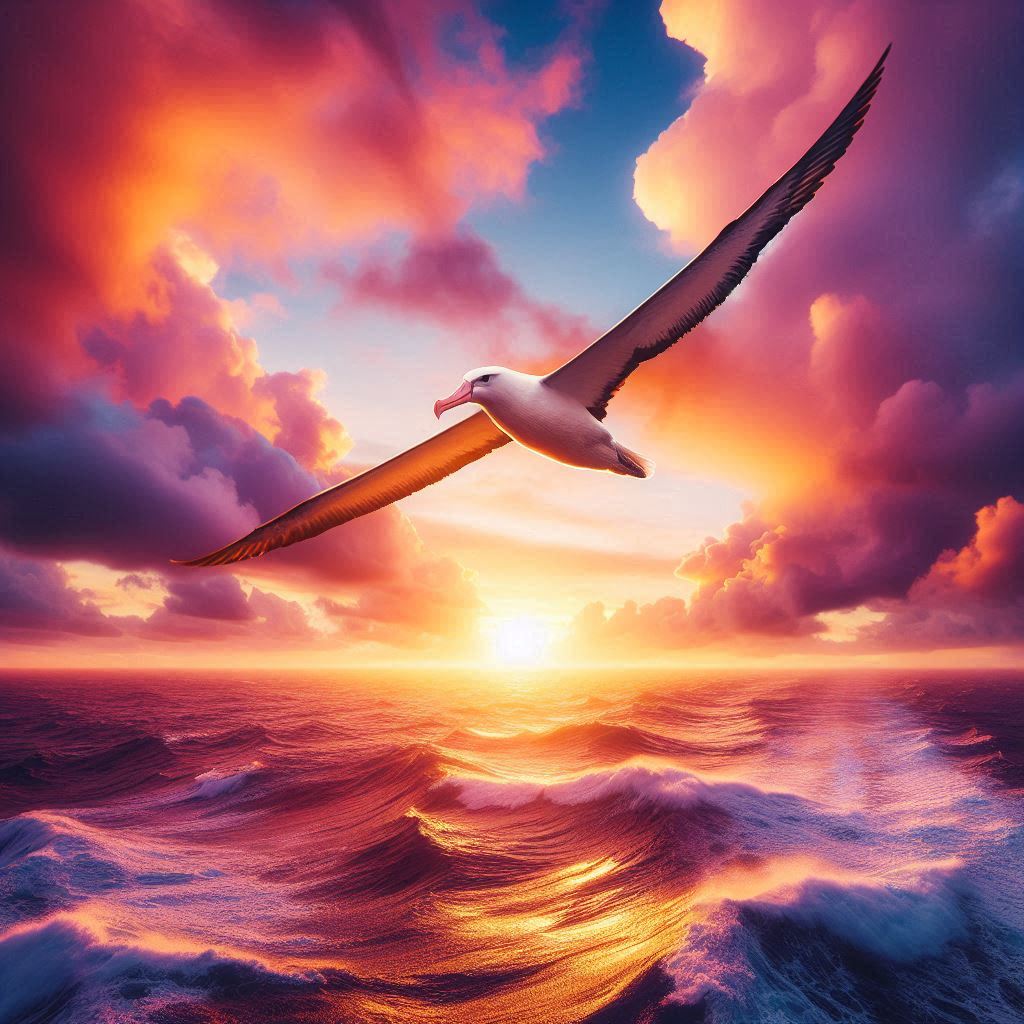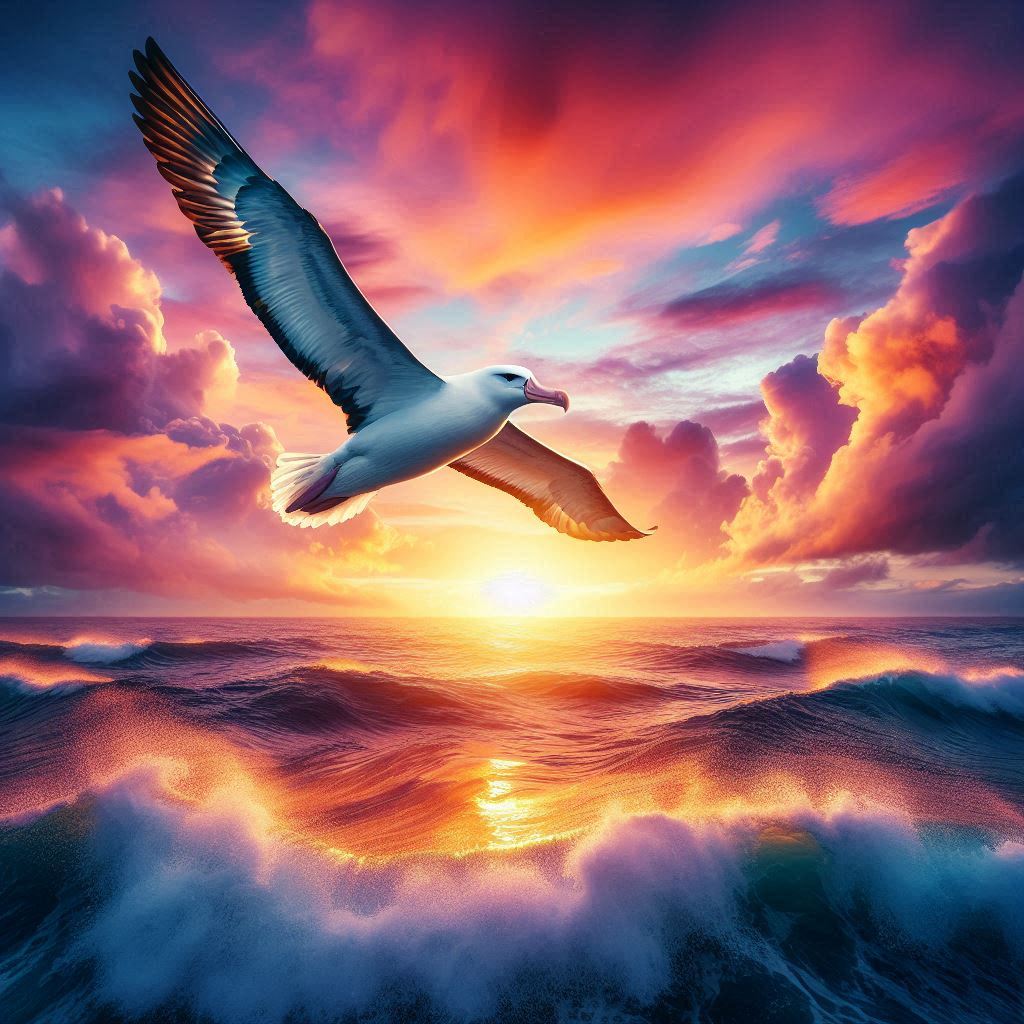🕊️ Albatross – General Overview
The Albatross is a large seabird known for its exceptional wingspan, graceful gliding ability, and life spent largely over open oceans. It belongs to a group of seabirds called Procellariiformes, which also includes petrels and shearwaters. Albatrosses are symbols of endurance and travel and have fascinated sailors and scientists for centuries.

📊 Classification
- Kingdom: Animalia
- Phylum: Chordata
- Class: Aves
- Order: Procellariiformes
- Family: Diomedeidae
- Genera: Diomedea, Phoebastria, Thalassarche, Phoebetria
- Species: ~22 recognized species
🧬 Physical Characteristics
- Size: Large; some species over 11 kg
- Wingspan: 2.5 to 3.5 meters (up to 11.5 feet in the Wandering Albatross – the largest of any bird)
- Color: Mostly white with varying black or gray markings on wings and back
- Bill: Long, hooked, with tubular nostrils (for excreting salt)
- Legs/Feet: Webbed, adapted for swimming
🌍 Habitat
- Found in Southern Ocean and North Pacific; absent from the North Atlantic
- Breed on remote oceanic islands with little human disturbance
- Spend most of their lives soaring over open oceans; rarely come to land except for breeding
🍴 Diet
- Carnivorous, mainly feeding on:
- Fish
- Squid
- Krill
- Carrion (dead animals)
- Skilled surface feeders and scavengers
- Can follow fishing vessels for scraps

🧠 Behavior
- Known for dynamic soaring – using wind and waves to travel long distances with little effort
- Travel thousands of kilometers without flapping wings
- Typically solitary or in small groups except during breeding
- Use elaborate courtship dances and vocalizations to bond with mates
🐣 Reproduction
- Monogamous: Form long-term pair bonds
- Breed once every 1–2 years
- Lay a single egg per breeding season
- Nesting: Ground nests on remote islands
- Both parents incubate egg (for up to 80 days) and raise the chick
- Chick-rearing can take 5–10 months
📉 Conservation Status
- Many species are threatened or endangered, including:
- Waved Albatross (Critically Endangered)
- Amsterdam Albatross (Critically Endangered)
- Threats:
- Longline fishing (bycatch)
- Plastic ingestion
- Habitat degradation
- Invasive species (rats, cats on breeding islands)
- Conservation efforts include:
- International agreements (e.g., ACAP)
- Bird-safe fishing gear
- Habitat protection and restoration

🌟 Fun Facts
- The Wandering Albatross can fly up to 10,000 km in a single foraging trip
- Albatrosses can sleep while flying during long journeys
- Their tubular nostrils help excrete salt, allowing them to drink seawater
- Known for their faithful lifelong mating pairs
- Once revered or feared by sailors; killing one was thought to bring bad luck (as in The Rime of the Ancient Mariner)
- Can live over 50 years; one tagged albatross named Wisdom is over 70 years old and still laying eggs